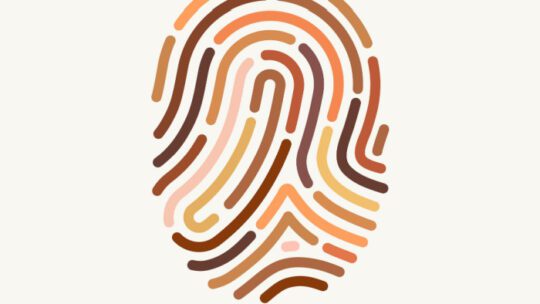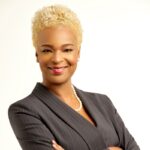
Editor’s Note: During a virtual roundtable ahead of Black History Month, we asked communicators about advising organizations and focusing on accountability nearly three years after George Floyd's murder.
Our guests were: Tonya Veasey, CEO of OCG+; Bia Assevero, VP, FleishmanHillard and co-founder of True MOSAIC, its DEI practice; and Aba Blankson, NAACP's CCO and CMO.
Key takeaways include:
- That companies sometimes lack rigorous standards in their diversity work, including hiring and partnerships
- Companies should go beyond BHM and ask, 'What are we doing during the other 11 months?' 'Why are we having a BHM campaign? What are its goals?' and 'Are some of our diversity initiatives side hustles, instead of priorities?'
- Silence about diversity is not an option for communicators
The conversation was edited for length and clarity.
PRNEWS: Let’s talk about accountability. After George Floyd's murder, some organizations issued statements about diversity and made commitments. Are they holding themselves accountable?
Aba Blankson: An internal D&I shift happened. Organizations without a chief diversity officer now [have one]…[Some companies] re-engaged with their employee resource groups (ERG). They pledged to support the ERG and chief diversity officer. A lot of companies are tracking how well they're doing in those spaces.
The thing I am not sure happened is external [change]…[Are companies] thinking about their supply chain? About advertising?...

It's not the $1 million or $2 million you pledged toward racial equity...it's about where you are actually spending your money, the $20 million that you didn't pledge. Are you spending it in ways that actually undermine the statement you issued in June 2020?
When the cameras are off, are you actually making internal and external changes?

Bia Assevero: The paradigm has shifted, the way Aba is describing it. We've moved well beyond [understanding that] D&I is good for business…to make it the business imperative.
A lot of chief diversity officers were hired. Some were promoted internally because of who they are or the passion they have for the work. And that's important and can work really well. But fundamentally we don't hire other C-Suite roles on that basis alone. So the same level of rigor you'd use in hiring your CFO or advancing any other business priority is required here too.
One thing you can do to be more accountable is address the side hustle syndrome. If there's anything in your D&I work that is treated like a nice to have, or an extracurricular activity, you need to address that. There has to be that level of rigor…to deliver impact.
Tonya Veasey: At the time of George Floyd’s killing, I was CEO at the Congressional Black Caucus Foundation. I received probably 20 calls a day from our corporate sponsors. They...let us know they cared and wanted to figure out a way to help. I had very interesting conversations about long-term commitments.
[But] this is not [about] sending a $50,000 check and then feeling good and moving on. [I want to know] what type of relationship are we going to have moving forward....

When we talk about accountability [it's important that] we measure what we treasure…If you say that you treasure [an initiative], then you are willing to measure the effects of whatever it is that you have decided you believe you should be doing…sometimes there's a disconnect between feeling as if you can use your funds to solve a problem, but not really wanting to be held accountable.
PRNEWS: Are consumers, especially Gen Z, holding organizations accountable?
Assevero: Morning Consult did research that showed the net share of Gen Z adults who say they feel proud to live in America is 57 percentage points lower than Boomers…[Gen Z has a] deep connection to the idea of what the world should be like, and who's responsible, and who needs to be participating in solutions...
You mentioned them as consumers, but they're also employees. And that's where the rubber is really hitting the road right now…the expectations they have for being in the workplace, not only for how companies envision themselves, but even just thinking about how to work and how leaders navigate that generational shift and figure out the moment in time at which they really need to be incorporating these expectations and points of view into how they're running the business…
PRNEWS: We're coming up to Black History Month (BHM). Some companies post BHM messages on social media, but do nothing else. What works, and how would you advise organizations across different industries to think about messaging?
Assevero: Start with a very simple question: 'What are you doing for the community you want to support, outside of this month?' If there is a credible answer, we can move forward. If not, there's probably not a credible campaign to be had.
Look at your company and your industry. Where are the Black Americans, or just Black people in general, who have contributed to work that's happening now? It's really important to note whose shoulders you are standing on…
Veasey: I always ask why. 'Why do you want to have a Black History Month campaign? What's the goal?'...It's wonderful to support and acknowledge history makers and celebrate them, but what impact do we want to have?
PRNEWS: Are there organizations doing multicultural marketing well? Are they learning from their missteps?
Veasey: I love what Target has done. They have really been thoughtful...they bring in Black designers and artists, and their work with Tabitha Brown and Tracee Ross…I've not seen a consumer brand be so intentional throughout the year…
Blankson: I really appreciate what Procter and Gambleis doing by adding more Black owned, Black-focused, multicultural-focused products to their suite.
They're aligning storytelling in a more authentic and multidimensional way...their advertising [shows] different kinds of families and [is] affirming representation...a diversity of backgrounds, contexts, experiences…It's not always that you have to send out a release and talk about this great thing. Just do the work.
Assevero: All of the examples that we've talked about are sitting in that consumer space. I don't think that's an accident. They are on the frontlines of this in a way that a lot of B2B companies are not.
The one lesson...a lot of organizations took away from 2020 is that there is no longer space for contradiction. You can't say one thing and do something else.
PRNEWS: What advice do you have for our readers?
Assevero: ...Communicators have the ability to influence and catalyze action. We sit on the frontlines in ways that other parts of organizations don't. We're not always final decision makers, but we have the ability to help, particularly senior [communication] leaders....
Ask, 'What do you believe in enough that you think is worth the criticism that you will inevitably get no matter what you do?'
It goes back to the notion of understanding what your why is. Communicators are uniquely positioned to ask those questions and have that level of reflection inform decision-making.
Veasey: I'm embracing...that I am a troublemaker. I used to run from it and say, “No, I'm not.” But yeah, I am.
…Sometimes it's very scary to speak up. But, as communicators, we understand words and how to use words to create action. And so when we are sitting at the table, we can use our words…to...get people to think differently and...act. I don't think communicators can sit and be silent.
Blankson: Silence is not an option for communicators. It is actually our job to push organizations to reflect what we are seeing and hearing, internally and externally. We can drive the organization in ways that other departments cannot. It is up to us to provide that lens of truth and challenge the organization. Celebrate the organization, yes…but it is also our job to sometimes challenge and push…
